
Neptis is a large genus of butterflies of Old World tropics and subtropics. They are commonly called sailer butterflies or sailers, or more precisely typical sailers to distinguish them from the related blue sailer (Pseudoneptis).
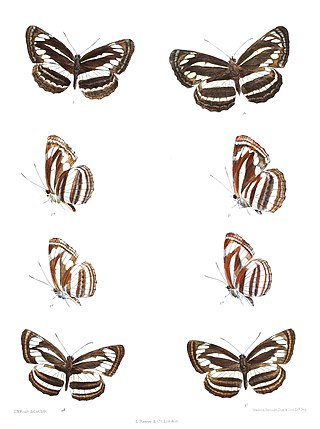
Neptis sankara, the broad-banded sailer, is a species of nymphalid butterfly found in the Indomalayan realm.

Neptis anjana, the rich sailer, is a species of nymphalid butterfly found in Asia.
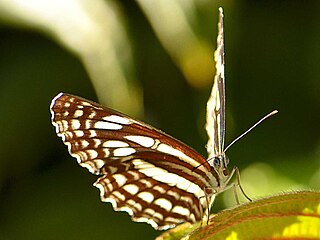
Neptis ida, is a butterfly in the family Nymphalidae.
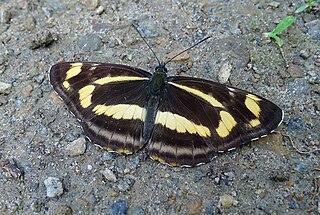
Aldania is a butterfly genus of the Limenitidinae. The genus is confined to the temperate East Palearctic. Aldania is closely related to Neptis.

Euploea phaenareta, the giant crow is a butterfly in the family Nymphalidae. It was described by Johann Gottlieb Schaller in 1785. It is found in the Indomalayan realm and the Australasian realm.
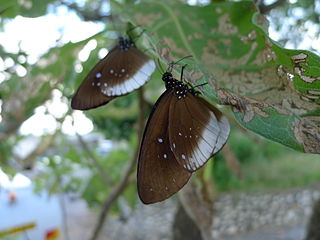
Euploea climena is a butterfly in the family Nymphalidae. It was described by Caspar Stoll in 1782. It is found in the Indomalayan realm and the Australasian realm.
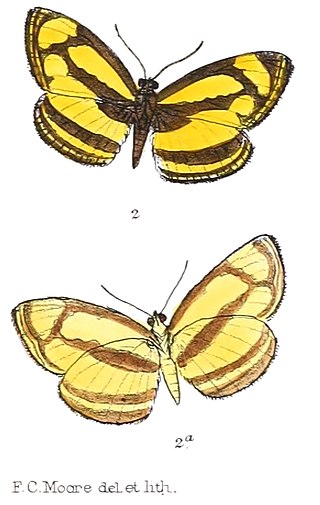
Lasippa tiga, the Malayan lascar, is an Indomalayan butterfly of the family Nymphalidae. It was first described by Frederic Moore in 1858. The larva feeds on Cratoxylon species.

Neptis celebica, the Celebes sailer, is a species of nymphalid butterfly found in Sulawesi.









